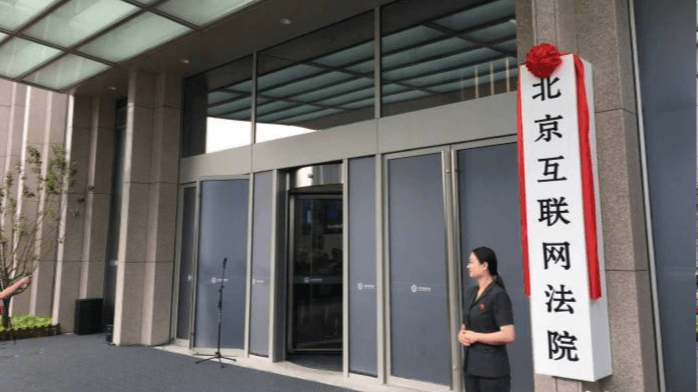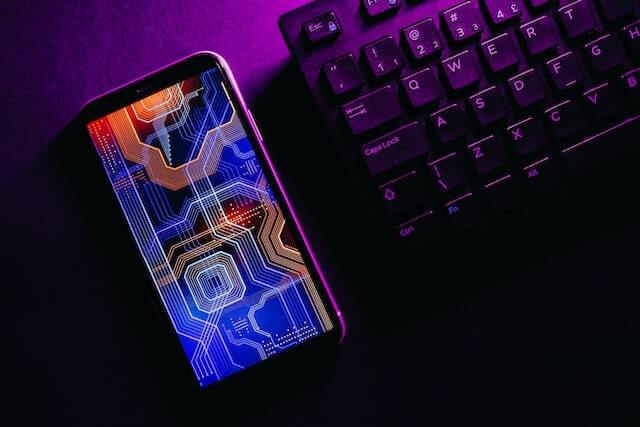
Beijing Internet Court issued a White Paper on technology in August 2019, introducing its progress in the IT system.
In this post, we will briefly introduce the contents of the White Paper.
Related Posts on Internet courts in China:
- A Close Look at Hangzhou Internet Court: Inside China's Internet Courts Series -06
- Beijing Internet Court’s First Year at a Glance: Inside China's Internet Courts Series -05
- How the Beijing Internet Court Develops and Runs its IT System: Inside China's Internet Courts Series -04
- Can I resolve cross-border online shopping disputes through the Chinese Internet Court: Inside China’s Internet Courts Series -03
- How to Litigate Before the Internet Courts in China: Inside China’s Internet Courts Series -02
- China Establishes Three Internet Courts to Try Internet-Related Cases Online: Inside China’s Internet Courts Series -01
I. Establishing a technical organizational structure
Based on the vision set by the Internet Technology Judicial Application Center (an affiliate of Beijing Internet Court), the Court’s IT system is developed by technology companies under outsourcing.
Beijing Internet Court established the Internet Technology Judicial Application Center, and engaged experts from the Supreme People’s Court (SPC), the Ministry of Public Security, universities and well-known Internet enterprises as consultants therefor. The center has established a management system for user needs acquisition, analysis, and priority ranking, and it holds user experience seminars on a regular basis as well.
Beijing Internet Court outsourced the development of the IT system to technology companies. For example, the online litigation system was developed by Beijing Thunisoft Information Technology Co., Ltd., whose main business is to develop IT systems for Chinese courts, procuratorates, public security departments, and law firms. As another example, the electronic evidence blockchain preservation platform was developed by Baidu, China’s Internet giant.

II. Access to third-party platforms
Beijing Internet Court provides access to other Internet companies’ platforms (such as social media and e-commerce websites). This will enable users of these platforms to better use the Beijing Internet Court’s available functions, which include online case filing, case information inquiry and so on.
Specifically, Beijing Internet Court has developed web applications to access WeChat (the mainstream social media in China) and Taobao (the largest e-commerce platform in China), on which Chinese Internet users spend most of their time. Therefore, after Beijing Internet Court accesses these two platforms, users can find and use its web applications more conveniently.
III. Developing the electronic evidence blockchain preservation platform – Balance Chain System
In China’s Internet-related disputes, one of the main difficulties that the litigants encounter is how to prove to the court that the electronic evidence submitted has not been tampered with.
Beijing Internet Court has developed the Balance Chain System (Tianping Lian, in Chinese:天平链). In this system, the whole process of extracting and keeping electronic evidence is traceable and credible. The litigants can submit the electronic data to the system, and in the hearing thereafter, they can easily prove to the judge that the data they submit to the court is identical with that stored in the system, and therefore the data has not been tampered with.
IV. Developing an automatic instrument generation system with knowledge graph technology
The system extracts the contents of electronic files and forms element information, then configures the element information on the instrument generation template, and finally synthesizes the corresponding text automatically.
Based on certain rules, the system can automatically generate instruments for judges, thus reducing the time-cost in preparing the judicial instruments, including judgments, rulings, settlement statements and so on.
The litigants can also provide necessary information under the guidance of the system, so that the system can automatically generate instruments for them to submit to the court, including complaints, answers, counter-complaints, application for objection to jurisdiction and so on.

V. Confirming litigant identity by face recognition technology
In order to ensure that it is the litigants themselves using the online system to participate in litigation, Beijing Internet Court requires the litigants to register and log in through facial recognition to confirm the legitimate identity of them.
As of 8 Aug. 2019, Beijing Internet Court has used this technology to remotely identify the litigants more than 200,000 times.
VI. Using OCR technology for text analysis in electronic files
Aiming at the documents submitted by the litigants to the court and the instruments prepared by the judges, the image recognition system can automatically identify the text, so as to facilitate the judges to locate and search the contents of the documents, classify and manage the documents automatically, as well as to provide the necessary data for the aforementioned knowledge graph system.
VII. Using the speech recognition system for automatic record generation
Speech recognition system can convert the audio files of court hearings, mediation and conversation into text, greatly reducing the workload of the law clerks.
VIII. Using online video conference system for online court trial and mediation
The online video conference system of Beijing Internet Court is mainly used for online trial and mediation. The system can achieve:
Simultaneous access to judges, plaintiffs, defendants and other parties;
Sharing of judges’ computer screens with the litigants to display litigation instruments, evidence, etc.;
Online live broadcast of case hearing to the public.
Cover picture by zhang kaiyv.
Contributors: Guodong Du 杜国栋








